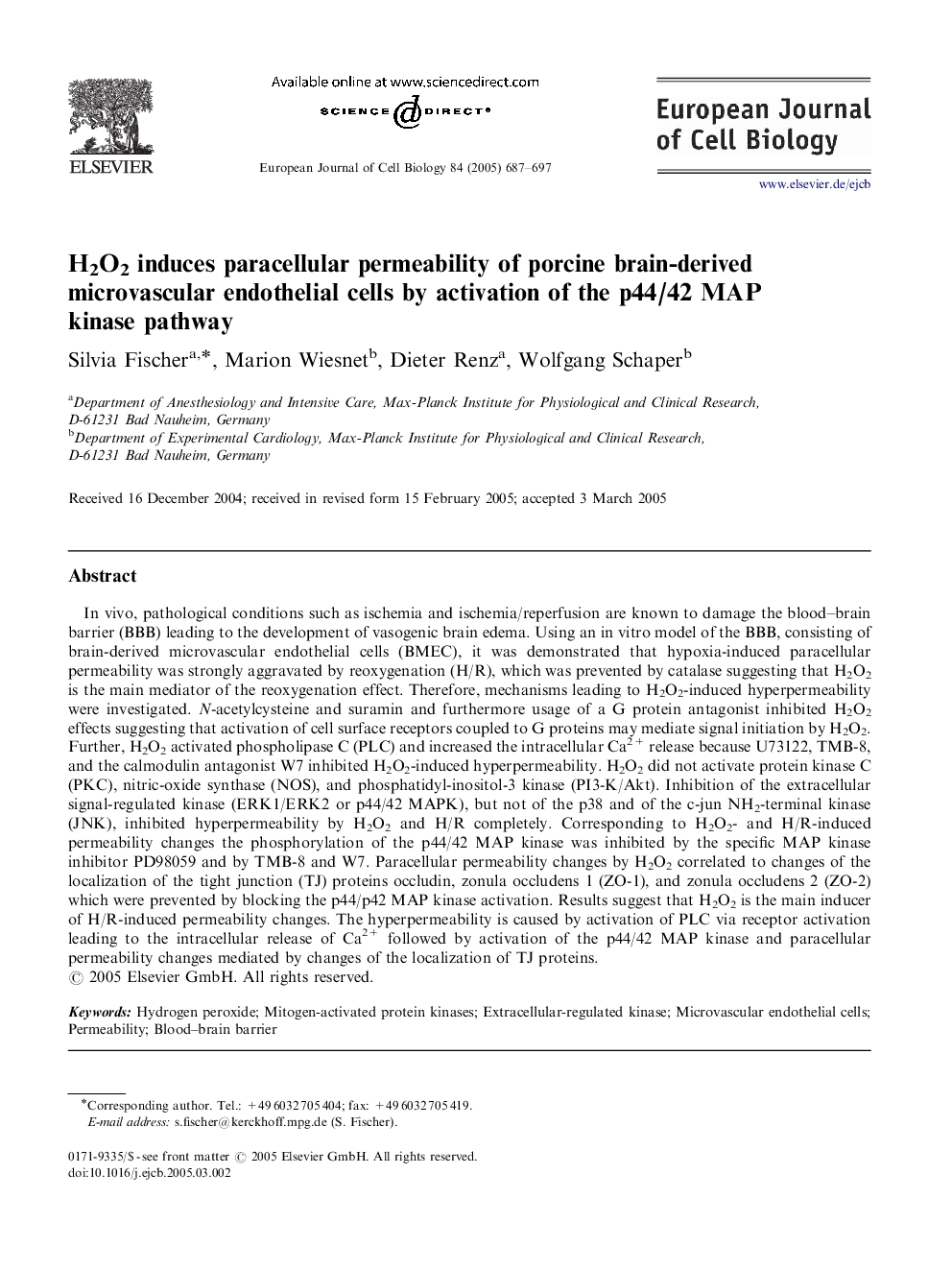| کد مقاله | کد نشریه | سال انتشار | مقاله انگلیسی | نسخه تمام متن |
|---|---|---|---|---|
| 9912427 | 1549784 | 2005 | 11 صفحه PDF | دانلود رایگان |
عنوان انگلیسی مقاله ISI
H2O2 induces paracellular permeability of porcine brain-derived microvascular endothelial cells by activation of the p44/42 MAP kinase pathway
دانلود مقاله + سفارش ترجمه
دانلود مقاله ISI انگلیسی
رایگان برای ایرانیان
کلمات کلیدی
موضوعات مرتبط
علوم زیستی و بیوفناوری
علوم کشاورزی و بیولوژیک
دانش گیاه شناسی
پیش نمایش صفحه اول مقاله

چکیده انگلیسی
In vivo, pathological conditions such as ischemia and ischemia/reperfusion are known to damage the blood-brain barrier (BBB) leading to the development of vasogenic brain edema. Using an in vitro model of the BBB, consisting of brain-derived microvascular endothelial cells (BMEC), it was demonstrated that hypoxia-induced paracellular permeability was strongly aggravated by reoxygenation (H/R), which was prevented by catalase suggesting that H2O2 is the main mediator of the reoxygenation effect. Therefore, mechanisms leading to H2O2-induced hyperpermeability were investigated. N-acetylcysteine and suramin and furthermore usage of a G protein antagonist inhibited H2O2 effects suggesting that activation of cell surface receptors coupled to G proteins may mediate signal initiation by H2O2. Further, H2O2 activated phospholipase C (PLC) and increased the intracellular Ca2+ release because U73122, TMB-8, and the calmodulin antagonist W7 inhibited H2O2-induced hyperpermeability. H2O2 did not activate protein kinase C (PKC), nitric-oxide synthase (NOS), and phosphatidyl-inositol-3 kinase (PI3-K/Akt). Inhibition of the extracellular signal-regulated kinase (ERK1/ERK2 or p44/42 MAPK), but not of the p38 and of the c-jun NH2-terminal kinase (JNK), inhibited hyperpermeability by H2O2 and H/R completely. Corresponding to H2O2- and H/R-induced permeability changes the phosphorylation of the p44/42 MAP kinase was inhibited by the specific MAP kinase inhibitor PD98059 and by TMB-8 and W7. Paracellular permeability changes by H2O2 correlated to changes of the localization of the tight junction (TJ) proteins occludin, zonula occludens 1 (ZO-1), and zonula occludens 2 (ZO-2) which were prevented by blocking the p44/p42 MAP kinase activation. Results suggest that H2O2 is the main inducer of H/R-induced permeability changes. The hyperpermeability is caused by activation of PLC via receptor activation leading to the intracellular release of Ca2+ followed by activation of the p44/42 MAP kinase and paracellular permeability changes mediated by changes of the localization of TJ proteins.
ناشر
Database: Elsevier - ScienceDirect (ساینس دایرکت)
Journal: European Journal of Cell Biology - Volume 84, Issue 7, 1 August 2005, Pages 687-697
Journal: European Journal of Cell Biology - Volume 84, Issue 7, 1 August 2005, Pages 687-697
نویسندگان
Silvia Fischer, Marion Wiesnet, Dieter Renz, Wolfgang Schaper,